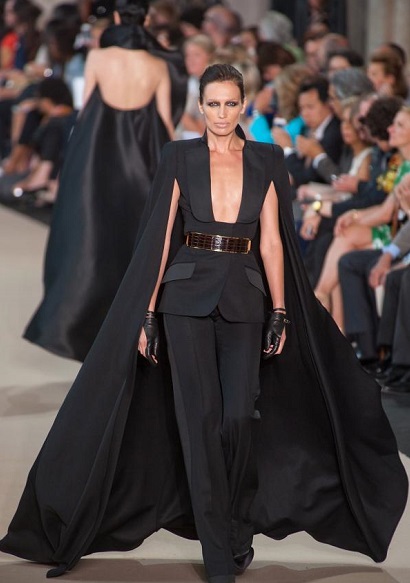Plagiarism/ 'Design-pinching' in Indian fashion
This is a collection of articles archived for the excellence of their content. the Facebook community, Indpaedia.com. All information used will be acknowledged in your name. |
2018: @DietSabya, @desidior’s exposés
Meet the new fashion police
Design-pinching is fashion’s worst-kept secret. And now, two new Instagram accounts are outing Indian designers who churn out copies
Shobita.Dhar@timesgroup.com/ The Times of India 29 April 2018
Indian designers don’t spare any punches when complaining about the “100% original fake lehngas” that garage-boutique darzis and retailers in markets like Chandni Chowk and Lajpat Nagar churn out for brides across the country. However, everyone maintains a collaborative silence when it comes to A-listers pinching designs from Western labels.
Recently, two Instagram accounts — @DietSabya and @desidior — have stirred up some controversy by calling out copycat desi designers. And we’re not talking about just ‘homage’ variety knockoffs but almost total replicas. One of the first posts on @DietSabya on March 15 shows a black dress by a famous Tunisian designer Azzedine Alaïa reproduced by a Delhi-based designer. The cheeky caption reads: “… Maybe it’s a tribute, or maybe it’s made in Okhla!” Another post shows a desi knock-off of a dark brown couture gown by Giambattista Valli, an Italian designer. The caption reads like a conversation between the copycat designer and her assistant: Pappu assistant: Ma’am, should we copy velli, I mean, Valli?
Designer: Haan, pappu...but make it in gendaphool orange and not this dirty chocolate colour. Chocolate looks nice in wedding boxes only lololololol.
Pappu assistant: Ma’am, you are a genius!
Interestingly, the account itself is inspired by @Diet-Prada, an American Insta account that Financial Times describes as “fashion’s most powerful critic”. But to be fair ,@DietSabya declares it upfront: “We are a copy!”
The month-old account has notched up more than 25,000 followers including actors Sonam Kapoor, Alia Bhatt and director Karan Johar. The anonymous account, run by people who call themselves a “collective”, has named and shamed lesser-known designers as well as some big-ticket labels. However, most of them refused to comment when contacted by this correspondent.
Fashion commentator and editor, Sujata Assomull Sippy, says that even senior designers copy, and this has been happening for long. “At the recent Lakme Fashion Week one established Mumbaibased label was so Dolce and Gabbana-meets-Gucci with its men’s wear that it really was embarrassing to watch. Yet many of the media sitting there were happy to give the label rave reviews. Perhaps this was because a famous Bollywood director walked for them,” says Sippy.
A similar Insta account, @desidior, calls attention to knock-off footwear, bags and even to big foreign labels copying Indian design. One such post shows the iconic French brand YSL’s take on Kolhapuri chappals. “While Indian artisans are dying of poverty, you are copying this style, giving them your designer tag and selling at exorbitantly high prices,” reads the caption. Earlier this year in January, Delhi-based design label People Tree’s co-founder Orijit Sen called out Dior for copying his motif.
If copying is the norm, then why the outrage now? Social media, says Sippy, has made it easier to spot such lifts and copies. “I think Indian designers got away with it so far because fashion is a small industry. Everyone is everyone’s friend. But these two accounts are anonymous, and that helps a lot,” says Sippy.
Purushu Arie, a fashion blogger from Chennai, says it’s utopian to expect fashion minus plagiarism, especially now when technology has made it very easy to copy designs. “The influence of seasonal trend books has made fashion structured and predictable, killing individual voice. All this makes it easier to copy,” says Arie. Many designers go “trend-scouting” on Insta for inspiration.
Veteran designer Ritu Kumar says that just pointing fingers at each other on social media makes a mockery of a serious crime. “It’s becoming a gossipy, non-serious thing. You need to substantiate your claim with water-tight evidence, like proof of the original design, the date it was designed etc.” Kumar should know. She won a copyright infringement case against seven Kolkata-based designers and retailers after a 15-year legal battle. “Our product was getting devalued because of the copies, and we were close to shutting shop,” recalls Kumar, who then took legal recourse.
It’s unclear if those found copying by these Insta accounts will ever face legal action but they definitely are losing fans and followers. In one post, @DietSabya calls out @houseofmisu, a curatorial fashion blog, for promoting a replica of a 2014 dress by Lebanese designer Nicolas Jebran. For those who don’t know Jebran, Beyoncé wore a black couture gown designed by him to this year’s Grammy’s. One of the people who commented to this post said that she had unfollowed @houseofmisu after reading this.
But aren’t small-time designers and bloggers an easy target? No, wrote @DietSabya handlers over email. “If you teach ‘em young they won’t end up copying blatantly. What is surprising is that a lot of young designers have messaged us expressing how thankful they are... and that this little account has made them sit up and research more. Moral of the story? People just need to try harder. Well, if Rakhi Sawant can so can you!” they write.

